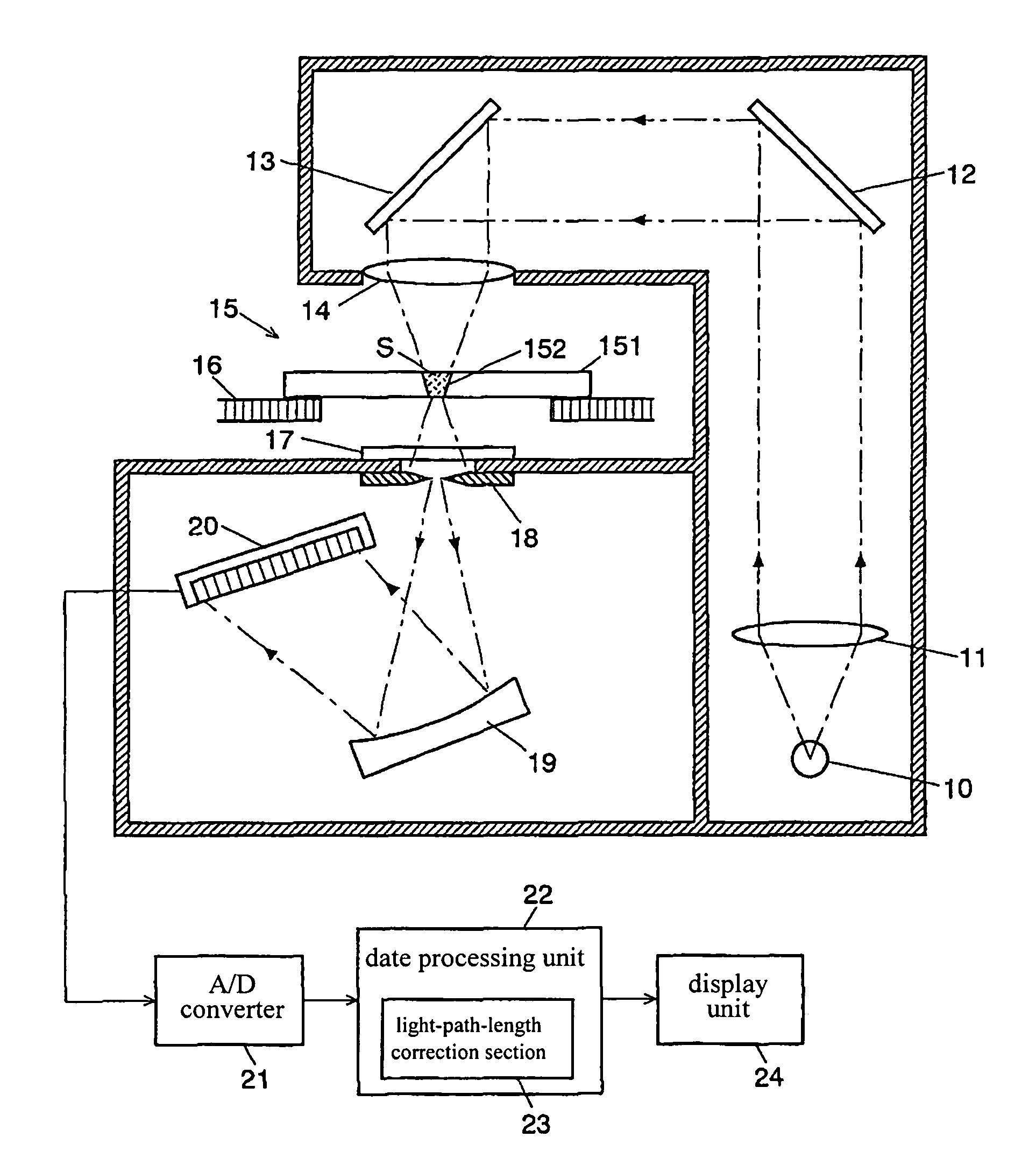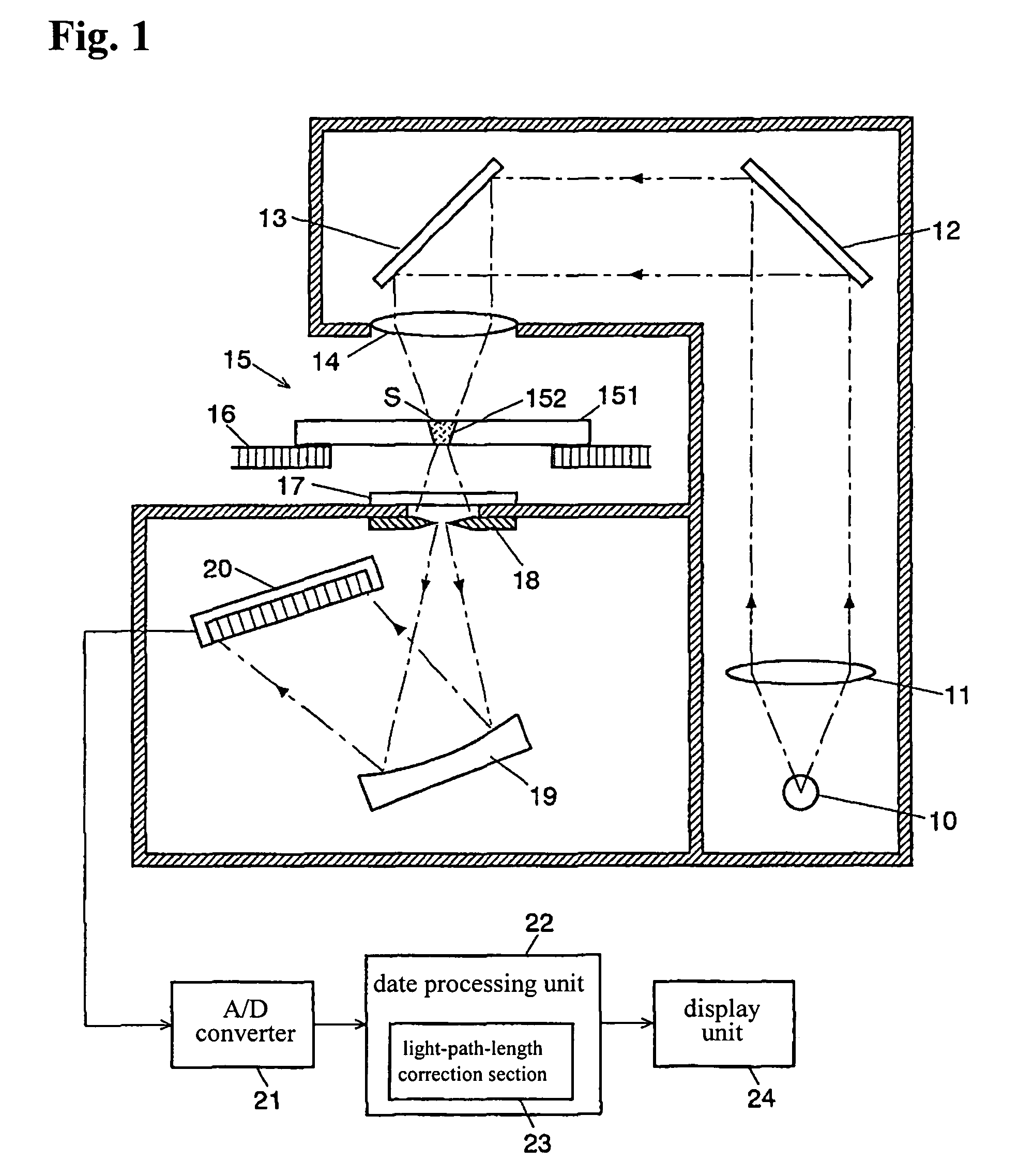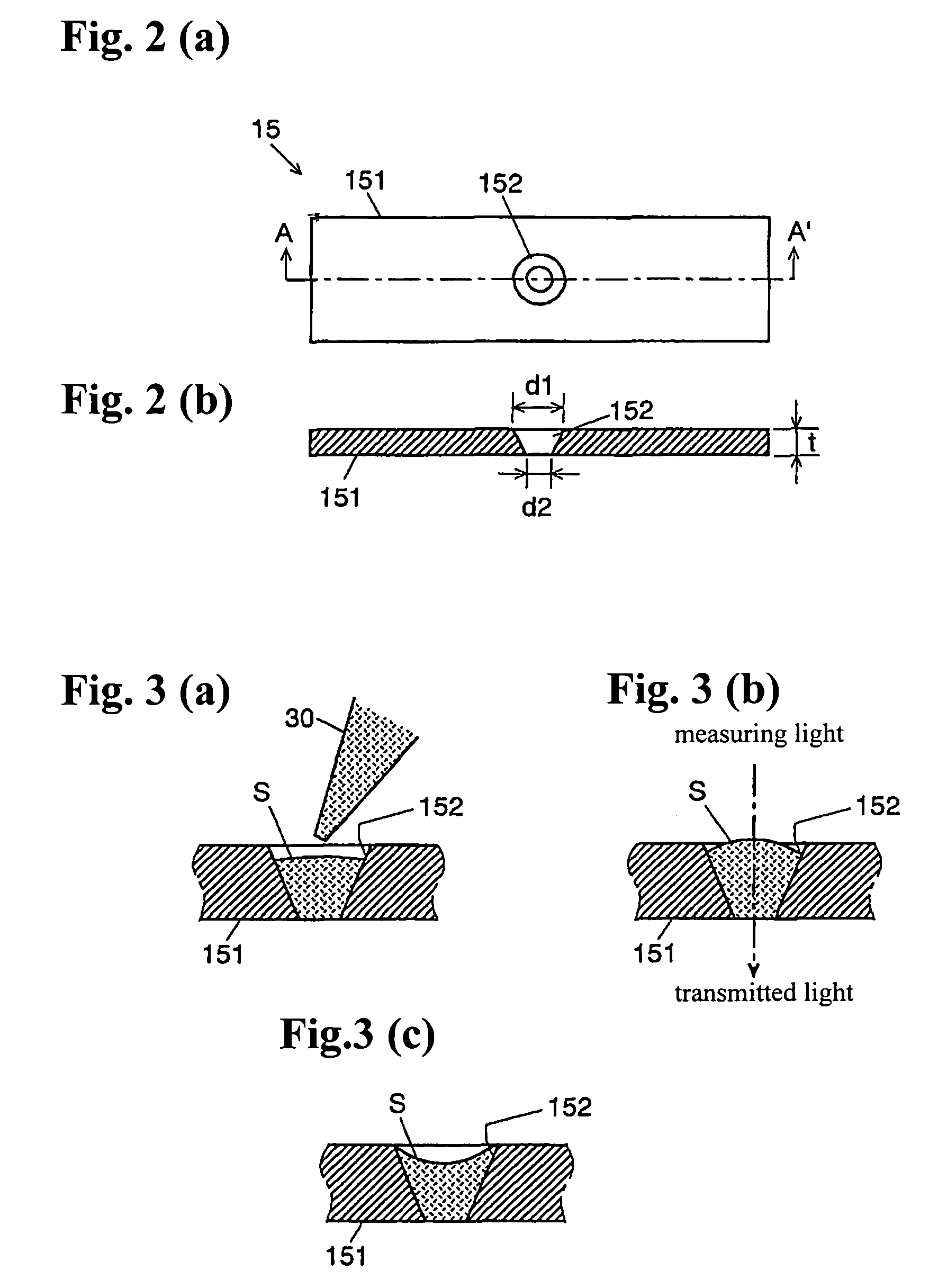Spectrophotometric method and apparatus
a spectrophotometric and apparatus technology, applied in the field of spectrophotometric methods, can solve the problems inability to use, and a lot of time and effort in cleaning after measurement, so as to avoid the risk of deterioration in accuracy
- Summary
- Abstract
- Description
- Claims
- Application Information
AI Technical Summary
Benefits of technology
Problems solved by technology
Method used
Image
Examples
Embodiment Construction
[0030]With reference to the drawings, an ultraviolet-visible spectrophotometric apparatus according to one embodiment of the present invention, which implements a spectrophotometric method according to one embodiment of the present invention, will now be described. FIG. 1 is a schematic block diagram showing the ultraviolet-visible spectrophotometric apparatus according to this embodiment. FIG. 2(a) is a top plan view showing a sampler 15 for use with the ultraviolet-visible spectrophotometric apparatus, and FIG. 2(b) is a sectional view taken along the line A-A′ in FIG. 2(a). FIGS. 3(a) to 3(c) are explanatory schematic diagrams of an analytic procedure.
[0031]In FIG. 1, light emitted from a light source 10 is collimated into a parallel light by a lens 11, and them reflected by a reflecting mirror 12 and a reflecting mirror 13 in this order. Then, the reflected light is focused by a lens 14, and emitted as a measurement light to a sample to be analyzed, or a target sample, from appr...
PUM
 Login to View More
Login to View More Abstract
Description
Claims
Application Information
 Login to View More
Login to View More - R&D
- Intellectual Property
- Life Sciences
- Materials
- Tech Scout
- Unparalleled Data Quality
- Higher Quality Content
- 60% Fewer Hallucinations
Browse by: Latest US Patents, China's latest patents, Technical Efficacy Thesaurus, Application Domain, Technology Topic, Popular Technical Reports.
© 2025 PatSnap. All rights reserved.Legal|Privacy policy|Modern Slavery Act Transparency Statement|Sitemap|About US| Contact US: help@patsnap.com



